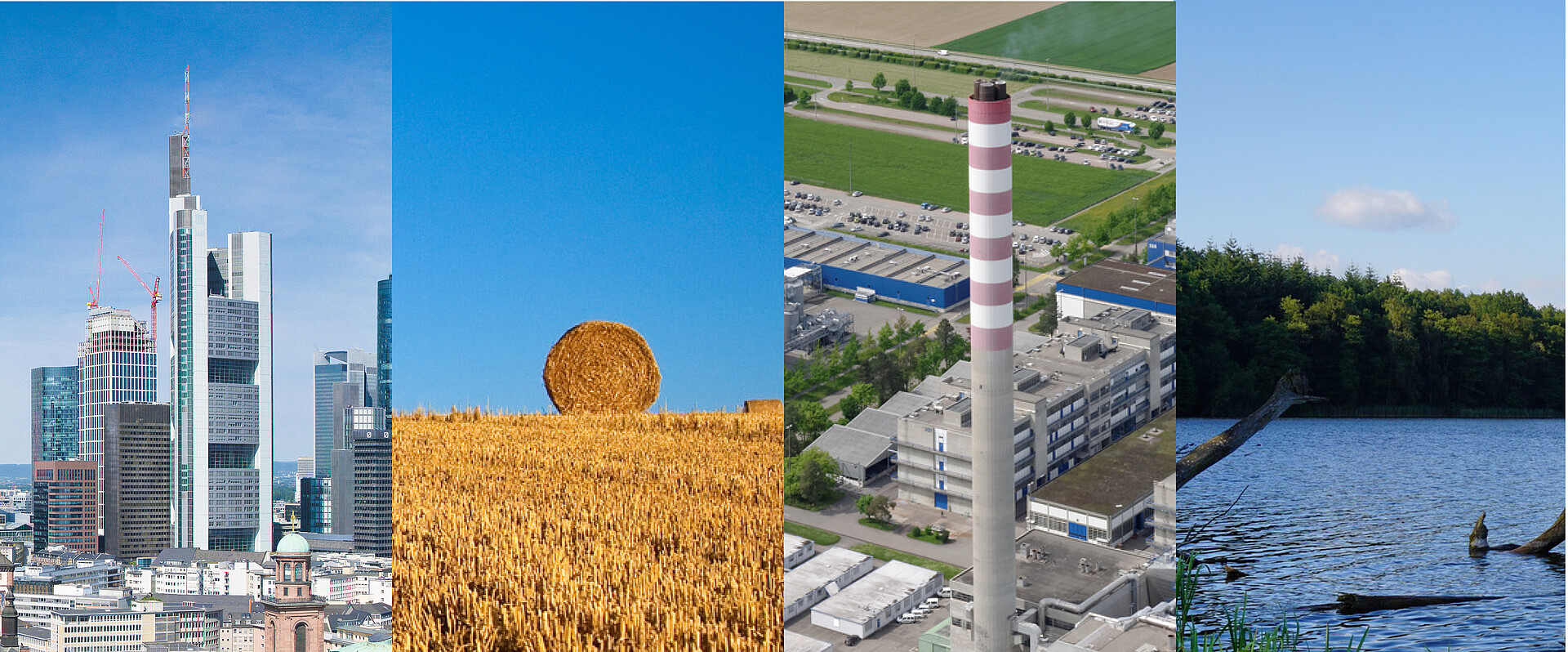You find them in agricultural regions and economic hotspots, in industrial parks as well as in nature reserves – domains with the German ending .de are registered virtually everywhere in Germany. Their precise distribution is mapped every year in the annual regional domain statistics published by DENIC. The registry managing all domains with the ending .de now presents the results of 2017. As of 31 December 2017, more than 15 million .de domains were registered in 401 cities and districts of Germany. Adding to these numbers are more than 1.2 domains of holders whose place of residence is abroad. In total, more than 16.3 million .de domains were registered at the end of 2017. Domain development was moderate and confirmed the East-West divide of regional .de domain distribution within Germany.
Municipal Level: The Majority of .de Domains Is Registered in Metropolitan Regions
Looking at absolute domain numbers, one still finds three large cities in the top ranks. Scoring 1,010,140 registered domains, Berlin extends its lead in the group of German cities. Munich (594,756) and Hamburg (577,127) consolidate their position on ranks two and three despite a slight drop in domain registrations. When referring the number of .de domains to the number of inhabitants, last year's ranking of the top three also remains unchanged. Osnabruck comes first again: With 1,498 .de domains per 1,000 inhabitants, it still is far ahead of the other two top runners in the city league, Munich (410) and Bonn (408). In regard to the administrative districts, Freising (443) in the Free State of Bavaria, a region in the South of Germany, is the frontrunner again. Second for the first time is the district of Stormarn (433) near Hamburg, which has relegated last year's number two, the district of Starnberg (404) to rank three. The national average has been established at 183 .de domains per 1,000 inhabitants since 2015 (higher individual statistical values reflect local domain investors with larger-scale domain portfolios).
Regional Level: Domain Increase in the East of Germany Overtakes Domain Growth in the West
Consistency is also observed for the ranking on the federal-state level for the number of domains related to inhabitants. The state of Hamburg – comprising the city of Hamburg and its wider outskirts – with 323 domains per 1,000 inhabitants maintains its uncontested leading position and stays far ahead of Berlin (287) and the state of Bavaria with its vast lands (206). As in the preceding year, the state of Saxony-Anhalt (84) brings up the rear after the states of Mecklenburg-Vorpommern and Thuringia with 107 and 108 domains per 1,000 inhabitants respectively. The national growth rate (+1.05%) was above that of 2016 (+0.49%). For the first time ever, the average growth rate was exceeded by all federal states of the eastern part of Germany in 2017. Looking at the complete German territory, nine federal states scored values level to or above the mean value, with Schleswig-Holstein (+11.3%) and Brandenburg (+2.4%) in the lead. Negative growth was found only in West Germany in 2017, i.e. in Hamburg (-1.5%), Bremen (-0.8%) and Saarland (-0.8%). Excluding Berlin (+0.3%), the average percentage domain growth among the states in the East of Germany (+1.6%) clearly exceeded that of those in the West (+1.1%). Related to absolute numbers, the so-called Free State of Saxony with 532,049 registered .de domains achieved the highest density among the federal states in the East of the country and was number ten in the overall German ranking. North Rhine-Westphalia (3,298,218 domains) and Bavaria (2,643,522 domains) remained on ranks one and two.
International level: Popularity of .de Is Increasing Also Beyond German Borders
The year-on-year total domain growth rate for 2016/2017 was 1.2 percent compared to 0.7 percent in 2015/2016. This is an increase by about 200,000 .de domains (previous year: 105,000). Furthermore, the 16.03 million .de domains that were registered at the end of 2017 included 1,185,247 domains of holders residing outside of Germany (2016: 1,146,500). This corresponds to 7.3 percent of the total number of domains registered under .de. The holders of .de domains originate from 217 countries. As in the past, German domains are particularly popular in the United States (28%), the Netherlands (10%) and in the Russian Federation (7%). But Germany's European neighbours Switzerland, Austria and Great Britain as well as the United Arab Emirates also account for 6 percent respectively of the .de domains with non-German-based holders. All in all, 16,314,502 domains were registered with DENIC on 31 December 2017. Statistically, every fifth inhabitant of the Federal Republic of Germany has registered a domain under the TLD .de. Thus, Germany consistently ranks fourth in the world after the Netherlands, Switzerland and Denmark.
Detailed online data available
You find comprehensive data and graphic material as well as the complete regional analysis in form of an Excel file for all the 401 cities and districts in the statistics section of the DENIC website at https://www.denic.de/en/know-how/statistics/. We also make available the annual analyses since 1995. In addition to absolute values, the statistics provide data on the number of domains related to the number of inhabitants, complemented by maps and diagrams showing the absolute and the relative distribution of domestic domains as well as of domain holders residing outside of Germany.
